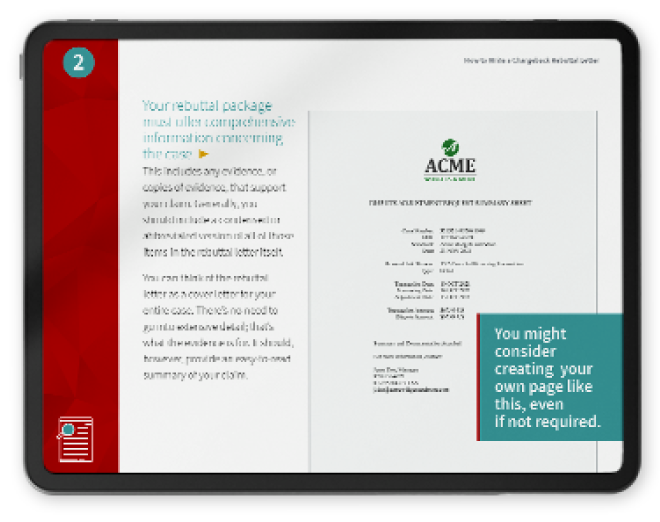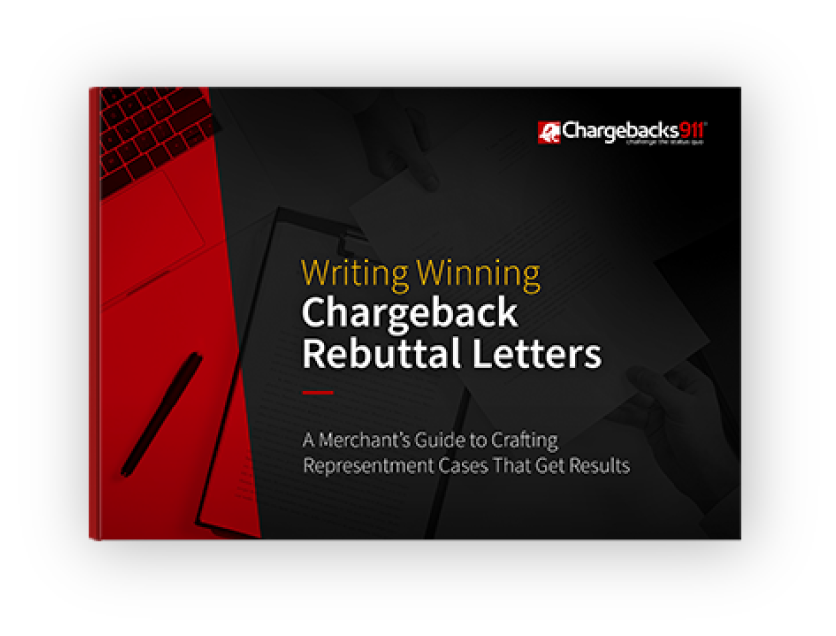Chargebacks911
Chargeback Disputes

Chargeback Disputes: How Does the Process Work? When are Disputes Okay (or Not Okay) to File?
Let’s say you make an online purchase. You hit checkout, enter your info, and get a confirmation email. Everything looks good.
But then, the goods never arrive.
You try reaching out to the seller, but never hear back. As you look more closely at the site, you see other “red flags,” and start getting that sinking feeling that you might’ve been scammed by a fake eCommerce site. Not to worry, though: you can file a chargeback to recoup your funds.
Today, we’re examining chargeback disputes. We’ll see how the process works, when it’s acceptable to use it, and offer some vital tips for both cardholder and merchants to make sure the dispute process is used responsibly.
Recommended reading
- Can You Dispute Apple Cash Transactions?
- 3 Types of Payment Reversals: What’s the Difference?
- The Bank Dispute Process: A Step-by-Step Guide
- Key Tips for Better Credit Card Dispute Resolution in 2024
- Customer Complaints: Why They Happen & How to Prevent Them
- Chargeback vs. Refund: Know the Difference?
What Are Chargeback Disputes?
Put simply, a chargeback is a forced payment reversal. It results from a payment card dispute and is carried out at the banking level.
It usually starts when a cardholder sees a suspicious charge on their statement. They may claim the transaction amount is incorrect, for example, or that an order was never delivered. In some cases, the customer doesn’t remember the purchase at all. So, the cardholder contacts the bank to dispute it.
The issuer (a fancy term for the cardholder’s bank) investigates a charge and determines that it’s invalid. So, the issuer withdraws the transaction amount from the merchant’s account, and returns it to the cardholder. This happens with no input on the merchant’s part. When this happens, you can say the disputed transaction has been “charged back” to the cardholder.
Most chargebacks start with a customer complaint filed with the bank. But, not every customer dispute results in a chargeback. So, it could be fair to consider the customer complaint as the first stage in the chargeback dispute process.
What is The Chargeback Dispute Process?
A chargeback dispute starts when a cardholder decides to challenge a charge on their credit card statement. The cardholder calls their bank, and if the bank agrees with the cardholder regarding the disputed transaction, then a chargeback gets filed.
At this point, the merchant can do one of two things. They can agree with the cardholder’s claim and accept the chargeback. That’s option number one. But, if the merchant is convinced the chargeback was an error, or that the cardholder made an invalid claim, they can fight it through the representment process.
Learn more about chargeback representment
Valid Reasons for a Chargeback Dispute
Okay, but what makes a chargeback dispute claim “valid” or “invalid?”
The simple answer to this question is intention. If a cardholder has a legitimate reason to file a dispute with their credit card company, and they have the evidence to prove it, then their dispute is valid.
There are two fundamental, valid reasons to dispute a charge:
Invalid Reasons for a Chargeback Dispute
Conversely, there are many reasons a cardholder should not dispute a transaction. These include:
- Convenience
- Refund took too long
- Forgetting about the purchase
- Forgetting about a recurring payment
- Not recognizing the merchant’s billing descriptor
- Buyer’s remorse
- Waiting too long to file a refund
- Confusing chargebacks with refunds
- A household member made a purchase without permission
Cardholders should never bypass a merchant for a forced bank refund. The law allows consumers to dispute charges when the merchant has made a legitimate error or has failed to uphold their end of a transaction. This does not include items which consumers simply don’t like, or which they decide are unneeded, though.
How to Win a Chargeback Dispute: Cardholders
As a cardholder, the best approach to take here will depend on the claim being made.
Keep in mind, the merchant has the option to provide evidence that may invalidate the cardholder’s claim. In these cases, the issuing bank may reverse the provisional credit and return the funds to the merchant, thereby negating the attempted refund. If the cardholder’s claim is valid, however, and a merchant doesn’t attempt to reverse it, the issuing bank will file the dispute as normal.
Cardholders should ensure that they have their facts in order before calling the bank, and that they have documentation handy to support their claim. They should also pay attention to chargeback time limits; cardholders often have 120 days to dispute a charge, but this can vary substantially depending on the claim.
How to Win a Chargeback Dispute: Merchants
For merchants, the dispute and chargeback processes are slightly more complex. They are only allowed to challenge illegitimate chargebacks (cases of so-called “friendly fraud”). Often, friendly fraud can be the result of a misunderstanding of the merchant’s policies on behalf of the cardholder, or can be purely intentional.
Also, the merchant must be able to provide evidence that the cardholder’s claims are invalid.
This evidence must be submitted in a formalized manner, along with a rebuttal letter. Some of this information will be outlined in the acquirer’s chargeback advice letter, instructing sellers how to respond. Merchants are on a very tight timeframe for submitting a response, though; often less than a week.
Learn how to fight chargebacks
10 Tips to Help Merchants Prevent Chargeback Dispute Claims
It costs time and money to fight chargeback disputes. There are no guarantees that the merchant will win, either. So, is it even worthwhile for merchants to try and fight back? Absolutely.
Giving up without resisting chargeback abuse sends the signal to customers that chargeback abuse is not a problem. It also makes merchants look like more of a risk. For most merchants, fighting back against bad chargeback dispute claims should be a no brainer.
To that end, here are a few tactics merchants can employ now to prevent disputes and chargebacks later:
Disputes and chargebacks are complex issues. Neither has a “one-size-fits-all” solution.
Frankly, what works for some merchants may not work for others. This is why it’s imperative to not only have a fraud and chargeback prevention plan in place, but also to diversify those options as much as possible.
With the industry’s first and only full-service chargeback management solution, Chargebacks911® is uniquely qualified to can help merchants prevent chargebacks, recover revenue, and grow their businesses. Contact us today to learn about our no-obligation ROI analysis.
FAQs
How does a chargeback dispute work?
A chargeback dispute begins when a cardholder contacts their issuing bank to challenge a transaction, typically due to fraud or dissatisfaction with the purchase. The issuing bank then investigates the claim, and if deemed valid, the transaction amount is debited from the merchant’s account and credited back to the cardholder.
Can you win a chargeback dispute?
Yes. It’s possible to win a chargeback dispute if the merchant can provide compelling evidence that the transaction was legitimate and the cardholder’s claims are unfounded. This often involves presenting thorough documentation, such as proof of delivery, transaction records, and customer communication history.
Is chargeback a refund?
No, a chargeback is not the same as a refund. A refund is initiated by the merchant to return the funds to the customer, while a chargeback is initiated by the cardholder’s issuing bank to forcibly reverse a disputed transaction.
Who decides who wins a chargeback?
Ultimately, the decision of who wins a chargeback is made by the cardholder’s issuing bank after reviewing the evidence provided by both the cardholder and the merchant. In some cases, the decision may be further reviewed and potentially reversed by the card network or an independent arbitration body if either party disputes the initial ruling.
What evidence is needed to dispute a chargeback?
To dispute a chargeback, a merchant typically needs to provide comprehensive and clear evidence such as transaction receipts, proof of delivery, and any relevant customer communication. This documentation helps demonstrate that the transaction was legitimate and that the cardholder received the agreed-upon goods or services.
What is a valid reason for a chargeback?
A valid reason for a chargeback can include unauthorized transactions where the cardholder’s payment information was used fraudulently. Additionally, chargebacks can be justified if the goods or services received were not as described, defective, or never delivered.
This post Chargeback Disputes appeared first on Chargebacks911









